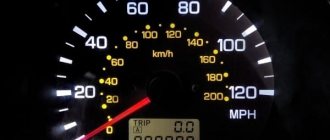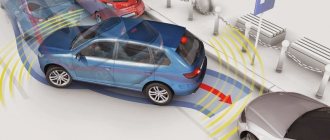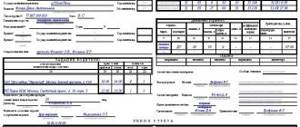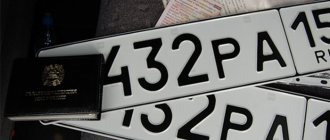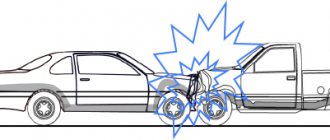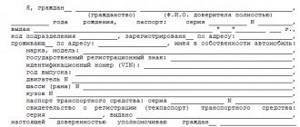An entrepreneur who decides to use the leasing service will definitely be faced with a choice: what type of this service to use. Leasing is provided in two forms: financial and operational (also called operational). The difference between these forms of service lies in the duration of the leasing agreement and the conditions under which the object of the leasing transaction is transferred. In order not to make a mistake and choose the form that is best suited in a particular situation, it is necessary to distinguish between types of leasing and clearly understand their features.
financial leasing
What is financial leasing? We offer a detailed overview of this type of financing with an analysis of the conditions and an analysis of the pros and cons. Financial leasing is a method of financing in which one party (the lessor) undertakes to purchase specific property from the seller and transfer it for temporary long-term use to the other party to the transaction (the lessee). In this case, the recipient of the leased asset undertakes to make regular payments throughout the entire term of the contract, essentially paying its full cost. At the end of the lease agreement, the lessee purchases the property.
Operating leasing mechanism
The company receives the item for a certain period, after which it undertakes to return it. While the property is in use, monthly payments must be made to the lessor's account. Experts note that the size of the latter is higher than when concluding a financial lease.
Operating leasing mechanism
Typically, such an agreement is valid for a short period (1-2 years). If you want to enter into a contract for a shorter period, then this will be a rental.
If we consider these contractual relationships using the example of car rental, it is worth highlighting the following important points:
- Thanks to operational leasing, you can get several cars for use for a period that ranges from one to two years.
Transfer of the object of the contract
- You won’t have to regularly update your vehicle fleet or worry about certain brands becoming obsolete. When the contract expires, you will enter into a new one, receiving other, more advanced vehicles for use.
- If the machine is used intensively, the costs under an operational leasing agreement are fully recouped within two years.
Video. Comparison of leasing and credit
Characteristic features of financial leasing
- The leasing company buys the property not for its own use, but in order to transfer it for long-term lease to the client.
- To purchase the leased asset, the lessor can use his own or borrowed funds.
- The lessee can choose the seller of equipment, vehicles and other leased items based on his budget and the specifics of the business.
- The Seller/Supplier is notified that its goods are being purchased under leasing terms, so the purchased property is supplied directly to the lessee, and not to the leasing company.
- In the event that problems arise with the operation of leased equipment, the lessee must file claims with the seller/supplier.
- The lessee is responsible for the leased property, so he must ensure safe operating conditions and insure it.
Leaseback and the story of Winston Churchill
The leaseback model predates the term itself. So, in 1922, the future Prime Minister of Great Britain Winston Churchill bought a house with land for 5 thousand pounds sterling. After World War II, Churchill decided to sell the house, and his old friend Lord Camrose proposed an original financial scheme.
The idea was to create a National Trust with the participation of sixteen wealthy people involved. The trust buys the house for £50,000, entering into a lifetime lease of the property with Winston Churchill. The latter undertook to pay 350 pounds every year. The house became the property of the National Trust and was subsequently turned into a museum. This was done, and Churchill paid in good faith - for 20 years, until his death.
Leasing agreement
The terms of cooperation between the parties are regulated by the leasing agreement. Parties to the leasing transaction:
- Seller/Property Provider.
- The buyer is a leasing company.
- The user is the lessee.
- The insured is an insurance company.
The agreement specifies the details of all parties to the transaction, their rights and obligations, conditions for the supply of property, the amount of regular leasing payments, and the repayment schedule. Each party to the transaction pursues its own goals: the seller wants to sell his goods; lessor - earn interest on financial lease; the lessee is able to purchase equipment without loans and guarantors, update means of production without high costs.
Advantages of financial leasing
- The down payment is minimal. The amount of the advance payment can be from 10, and for some leased items even 5 percent.
- The requirements for the financial condition of the lessee are not as high as in the case of bank lending. Even a company that has been on the market for only 3 months can purchase property on lease (not all leasing organizations operate under such conditions).
- The lessee can distribute the burden on the budget evenly over the entire term of the transaction. The amount of lease payments can be adjusted by changing the term of the contract, the amount of the advance or redemption payment.
- Purchasing property through financial leasing often involves discounts and additional bonuses for the lessee.
- Tax benefits and depreciation benefits.
- Regular leasing payments are taken into account as expenses (cost), so the taxable profit base is reduced.
- Refund of value added tax on leasing property up to 20%.
The key advantage of financial leasing is the ability to quickly and on favorable terms acquire the fixed assets necessary for a business, update and expand the production base. A special advantage is the long transaction period of up to 10 years, after which the leased property becomes the property of the lessee.
Fill out the form online and we will select a profitable and suitable leasing program
How does leaseback work abroad now?
In the West, this model works both as a type of financial leasing and as one of the operational leasing schemes.
This, by the way, is the main difference from the Russian model, where leaseback is considered only one of the types of financial leasing. This model is most common in Germany, Great Britain and France. These countries were among the first to use leaseback, and there it is actively used in a variety of industries. In particular, aviation companies often sell their own aircraft to a leasing company under a leaseback scheme. In some cases, this is done to reduce the airline's debt load.
Among the largest deals under the leaseback scheme is the leasing of the Liberty department store - this is one of the oldest department stores in Britain. The term of the deal is 30 years, it was concluded in 2009. In France, in 2011, a transaction was carried out with the participation of the French hotel chain Suite Novotel; the transaction amount was 77 million euros. Among the latest transactions, we can mention the leaseback of Metro Mold and Design buildings. The contract was concluded for 20 years.
The largest leaseback transaction concluded this year was the scheme implemented by LifePoint Health, Inc. The scheme involves 10 hospitals, the transaction amount is $700 million.
Abroad, leaseback is a popular financial instrument that is used by a large number of different companies from a wide variety of industries. In addition, there are no restrictions in relation to individuals entering into leaseback agreements.
Rent or purchase
The fundamental difference between the different forms of leasing is that operating leasing is more like a long-term lease. The object of the agreement is transferred for use for a monthly fee, and at the end of the agreement it may not be purchased, but returned to the lessor. After this, the object can be leased out again to other clients. Financial leasing is more of an installment purchase. The leased object, transport or equipment, after the end of the agreement and payment of the difference between the cost and the amount of lease payments, necessarily becomes the property of the client. If you compare the cost, then operating leasing is always much more expensive.
Timing and amortization
The market in which operating leasing is most common is the automotive market. The reason for this is the predictability of changes in the value of an asset in the car market over time. The list of cars available for leasing today includes almost all brands and models presented on the domestic market. Recently, leasing companies have significantly expanded their offer, since this service can now also be used by individuals. Despite the prevalence of this service, the volume of financial leasing is incomparably larger, because most clients of leasing companies prefer to buy out the leased object as their own. Another significant argument when choosing a form of leasing is the opportunity to optimize the tax burden for a business. The financial leasing agreement is concluded for a period corresponding to the depreciation period. For operational leasing, the agreement lasts less than the depreciation period of the equipment, which will subsequently be used by new clients of the leasing company.
Economic meaning of leaseback
The imperfection of the legislative framework and the subjective attitude of tax authorities, who may see leaseback transactions as an attempt to evade taxes, are today the main limitations, primarily for the use of this instrument by legal entities.
Regulators are wary of the actions of unscrupulous market players, despite the fact that leaseback has not caused any significant problems in the turnover, and its share in comparison with other financial instruments is extremely small.
In addition, in other countries there are no restrictions on individuals entering into leaseback agreements. Let me remind you that this year “hot heads” lobbied for a complete ban on the use of leasebacks by individuals. On behalf of the President, the Prosecutor General's Office, the Central Bank and Rosfinmonitoring carried out an inspection, as a result of which, despite the violations identified, it was established that the leaseback scheme does not go beyond the legal framework. The state has taken a balanced position on this issue, however, we are still far from the maturity of the financial market of Western countries in terms of leaseback.
Hassle-free operating leasing
At the moment, operating leasing is not so common in Russia. To develop this service in the country's market, certain conditions must be met. The main one is the developed market for various types of secondary property. Its presence allows the lessor to adequately calculate the cost of the equipment provided and returned and weigh its risks. The cost of operating leasing is also several times higher than financial leasing. The reason for this is the need to organize a whole range of equipment maintenance services that the leasing company provides to clients. The client is spared from performing such tasks as routine repairs and seasonal maintenance of vehicles, undergoing technical inspection, etc. Such conditions are beneficial for small companies that need a fleet of vehicles, but do not have the ability to support all these complex business processes. The underdevelopment of the market, the complexity of organizing processes and high costs lead to the fact that only a few leasing companies offer operating leasing services.
Car for lease
Regardless of the type of main activity, each company has in stock from one to several thousand corporate cars. Maintaining and maintaining a vehicle fleet on your own is usually quite expensive and requires the use of additional company resources. At the same time, funds have to be withdrawn from circulation in order to cover administrative costs, costs of repairs, maintenance, and management.
In addition, when buying a car you need to pay income tax. This is why car leasing is becoming increasingly popular in Russia. Sergey Dianin, general director of the leasing company ARVAL, spoke to the correspondent of the news agency Clerk.Ru Andrey Sokolov about the nuances of this service.
Sergey, please evaluate the car leasing market in Russia and abroad.
This service appeared in Russia four years ago and today its popularity is growing rapidly. In Europe and the USA, most vehicle fleets are leased. In Europe it is 28%. In Russia - only 1%. The Russian operational leasing market is still at the development stage. Companies believe they can take better care of their fleet themselves and prefer purchasing corporate vehicles to leasing to ensure the mobility of their employees. Although many companies already use financial leasing to purchase cars.
Leasing in Russia is an attractive and rapidly developing financial instrument. Currently, leasing is accompanied by a favorable tax regime, according to which lessees can include the entire amount of lease payments in production costs and charge accelerated depreciation on the leased item. Modern Russian legislation establishes significant freedom of contractual relations between the parties to a leasing transaction, which allows the interests of both parties to be taken into account.
Leasing is the most profitable of financial instruments that allow a company to free itself from assets that are not their production assets, that is, those that do not work for the main business.
Compare leasing and buying a car outright from an accounting perspective. What are the advantages of leasing?
From an accounting perspective, leasing has a number of significant advantages over purchasing a car outright.
Firstly, borrowed capital is not attracted, and the enterprise’s balance sheet maintains an optimal ratio of equity and debt capital. This preserves existing sources of financing and lines of credit. In addition, it is easier for an enterprise to obtain property on lease than a loan for its acquisition, since the leased property acts as collateral under a leasing agreement.
Secondly, the problem of limited liquid funds is mitigated, the costs of purchasing and maintaining a vehicle fleet are evenly distributed over the entire leasing period, and funds are freed up for investment in other types of assets.
Thirdly, leasing allows the lessee company to always have its own fleet of vehicles in perfect condition without large one-time costs and the need to raise borrowed funds.
The company has significant advantages in terms of financial planning and budgeting due to the fact that the amount of monthly leasing payments is predetermined and they are evenly distributed over the entire leasing term. After all, leasing payments already include all expenses covering the maintenance of the vehicle fleet, thus, the distribution of financial flows is carried out with an emphasis on the main activities of the company.
In addition, it is worth noting that leasing is a more profitable way of investing, as it allows you to optimize the taxation of a business: leasing payments are fully included in the cost price and reduce the taxable base for income tax, VAT on leasing payments is fully refundable.
The company can easily plan cash flows, create a budget with great accuracy and optimize costs. The amount of the periodic payment and the range of services received are known in advance and are set in accordance with the various options included in the contract. This allows you to avoid unexpected financial situations while using the car. That part of the company's costs that is associated with the maintenance and operation of the vehicle fleet can be easily planned.
With the use of operating leasing, a company can fully control its finances while significantly reducing administrative burden and indirect administrative costs. Only the cost of using and owning the vehicle is paid, not the title.
Due to the fact that the car is returned to the leasing company after the end of its useful life, the residual value of the car is deducted from the contract amount, which leads to a significant reduction in leasing payments. In this case, the risk associated with the future value of the car is borne by the leasing company. Leasing allows you to free up your own financial resources and use them to run your main business, which brings greater returns.
The company's own funds are a very valuable source of financing, which should be invested in products and areas that bring the greatest profit. Unlike purchases or traditional loans, operating leases have no impact on a company's balance sheet. All types of risks associated with the car and its use are transferred to operational leasing professionals: financial risks, risk of loss of value of the car, technical risks, inflation risks, insurance risks, residual value risks and others. Thus, all expenses are planned and the lessee is protected from unforeseen events. Timely renewal of the vehicle fleet is reliable protection against technological aging and a way to optimize costs. The company has the opportunity to focus on running its core business. At the same time, the administrative burden is reduced, internal processes are simplified, which leads to a significant reduction in administrative costs. Savings are achieved by reducing the number of employees involved in this process, which means reducing physical workspaces and associated costs, by reducing the number of operations, such as processing, monitoring and paying invoices, simplifying processes, etc. There is also no need to organize your own vehicle fleet.
All fleet operations are carried out by the leasing company using the technology and experience necessary to perform these tasks with maximum effect.
How is operating leasing different from financial leasing?
The main difference between operating leasing and financial leasing is that the car, after the end of the leasing term, is returned to the leasing company, being on its balance sheet throughout the entire leasing term. And with financial leasing, ownership of the car passes to the lessee, who subsequently must decide for himself whether the further use of the car or its sale. In addition, he must bear all associated costs for operation, maintenance, and sales, as well as make all necessary tax payments (transport tax, property tax, income tax).
With operating leasing, the company receives a much wider range of services: choosing a car that meets the company’s objectives, purchasing it, registering it, insuring it, carrying out all types of work related to operation (maintenance, repair, replacement and storage of seasonal tires, insurance and insurance claim management , round-the-clock technical assistance on the road, provision of a replacement car), and, subsequently, the sale of a used car on the secondary market and replacing it with a new one.
What advantages of financial leasing before buying a car can you note?
The advantages of both operational and financial leasing over buying a car are, first of all, saving the company’s own funds. The vehicle fleet is listed on the leasing company’s balance sheet, allowing it to free up funds for core activities and improve the company’s financial performance.
Is leasing beneficial from the point of view of optimizing the work of the accounting department?
With operational leasing, the number of accounting operations associated with the vehicle fleet is significantly reduced and the work of the accounting department as a whole is simplified. Time and resources are saved for this already very busy department in the company. The number of counterparties, contracts, invoices, invoices, and acts is reduced. Document flow for the maintenance of the entire vehicle fleet is reduced to one invoice and invoice per month. The accounting department does not have to waste time paying for all services and processing primary documents received from various suppliers and service stations; all these concerns are taken over by the leasing company.
Financial leasing as an alternative to credit
The majority of clients of leasing organizations are small companies that do not have the opportunity to withdraw large sums from circulation to purchase equipment, and at the same time, for various reasons, cannot take out a loan for these purposes from a bank. For example, a bank sets strict requirements for small and medium-sized businesses when issuing a loan, but leasing companies do not. Thus, using leasing, although the client overpays, he gets the opportunity to update and expand the base of fixed assets without the need to withdraw significant amounts from circulation.
